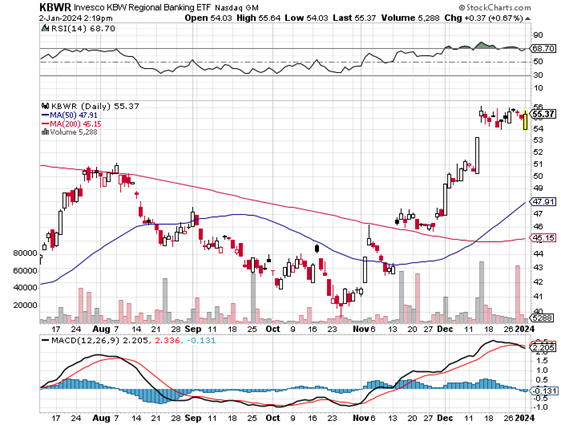This Is Why More Banks in the U.S. Might Collapse
In 2023, there were a few regional bank failures in the U.S. This took investors by surprise, which led them to flee bank stocks in a panic.
Here’s something worrisome: more bank failures could follow in 2024. It’s hard to see the worst as being behind us.
At the moment, no one seems to be really concerned about bank failures in the U.S. The common belief is that the banking system is resilient and everything is under control. This is all on the back of expectations that the U.S. economy will do well in 2024 and hopes that a few interest rate cuts by the Federal Reserve will make banks more resilient.
Here’s the thing, though: it’s very common for market participants to get complacent and not pay attention to underlying problems.
The first of the bank failures in the U.S. in 2023 was the collapse of Silicon Valley Bank in March.
The biggest reason Silicon Valley Bank failed was losses on its balance sheet. The bank made bets on bonds, and as interest rates moved higher, those bonds didn’t do so well. Once Silicon Valley Bank’s customers got a whiff of that, they fled, resulting in the bank’s failure.
Unrealized Losses at U.S. Banks Could Cause Major Problems
What’s happening with U.S. banks now?
Before going into the details, know these two basic terms: realized loss and unrealized loss. A realized loss is what you get when you sell a security at a loss. An unrealized loss is what you get when the price of a security that you own has come down, but you aren’t selling it.
At the end of the third quarter of 2023, Federal Deposit Insurance Corporation (FDIC)-insured banks had unrealized losses of $683.9 billion on available–for–sale and held–to–maturity securities. These losses increased by 22.5% from a quarter earlier! (Source: “Remarks by FDIC Chairman Martin Gruenberg on the Third Quarter 2023 Quarterly Banking Profile,” U.S. Federal Deposit Insurance Corporation, November 29, 2023.)
Why such a big unrealized loss? It was primarily due to increases in mortgage rates.
Extrapolating that a little bit, unrealized losses will eventually become realized losses. Another thing to consider is that there’s an immense number of derivatives floating around the financial system. Once the losses become realized, they could, all of a sudden, turn into counterparty issues and lead to a much bigger crisis.
What to Do if There Are More Bank Failures in the U.S.
Dear reader, I’m not rooting for bank failures in the U.S., but ignoring what’s happening could be a grave mistake. If history can tell us something, it’s that financial markets go through significant volatility when bank failures happen, and this could mean big losses in investment portfolios.
Obviously, bank failures in the U.S. could hurt banking stocks—more specifically, those of regional banks. That’s where a lot of problems originate.
Take a look at the chart below. It plots the Invesco KBW Regional Banking ETF (NASDAQ:KBWR).

Chart courtesy of StockCharts.com
Over the past few months, regional bank stocks have rallied. But one has to wonder what will happen if there are a few bank failures in the U.S.
Will regional bank stocks be able to hold their value, or will there be another exodus?
Time will tell more, but don’t get complacent.






